Proper storage of sauerkraut in the refrigerator: how much is stored and how to extend the shelf life
Cabbage is harvested in the fall, stored and used for several months. In winter, sauerkraut will delight you with crunch and vitamins, if cook properly and maintain without loss of qualities.
Pickles are stored in barrels, glass jars, which are placed in the basement, cellar or refrigerator. How much sauerkraut is stored in the refrigerator, what conditions must be observed and what product cannot be eaten - we will tell in the article.
The content of the article
Storing sauerkraut in the refrigerator
The shelf life of blanks depends on several factors.: temperature and humidity of the ambient air, the selected container, additional ingredients.
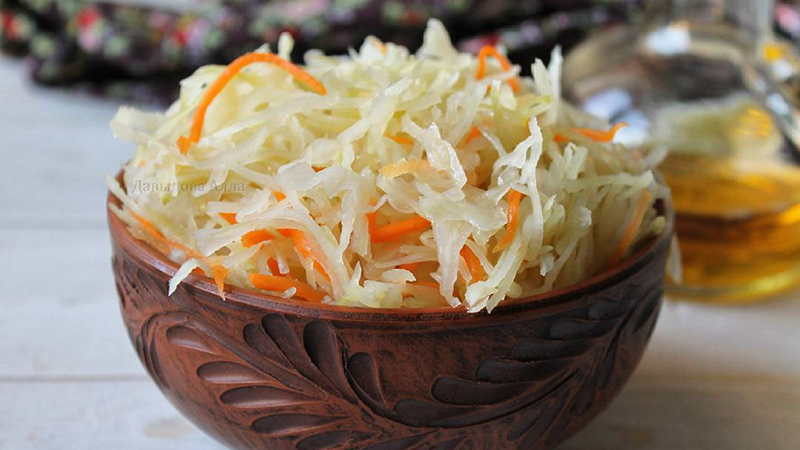
If you follow the storage conditions, then pickles pickles in the refrigerator for 6-8 months.
In an open container, the workpiece is stored in the refrigerator for no more than two months... But experienced housewives extend the shelf life using their secrets.
Choice of containers
The factor of choosing a container for fermentation is important, the shelf life depends on it:
- Enamelled saucepan or bucket... The inner surface is checked for chips to exclude metal oxidation. Store only under a lid and oppression for about 6 months.
- Glass jars... They are easiest to store in the refrigerator, always under a sealed lid, fully covered with brine. The shelf life is about 4-6 months.
- Plastic containers... Refrigerated storage will be no more than 2-3 weeks. It is allowed to freeze in small portions and then immediately consume the defrosted product for food.
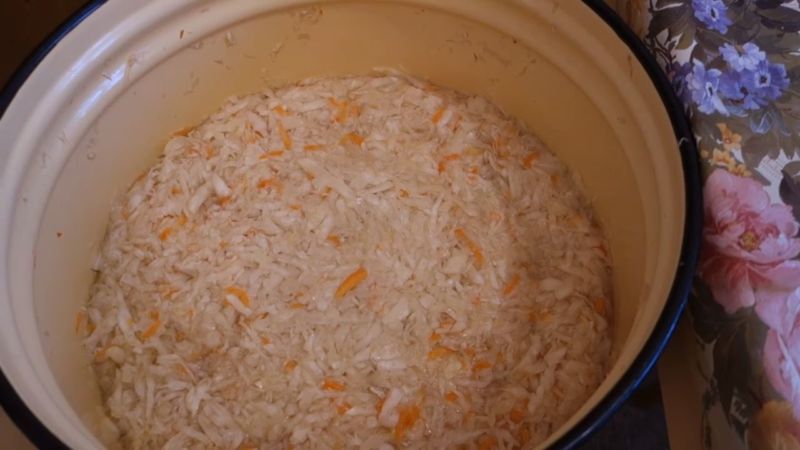
Temperature
The main factor affecting storage life is temperature.... Sauerkraut is a product obtained by natural fermentation, which means that in the heat it can acidify and become inedible.
Interesting on the site:
The best sauerkraut recipes without salt and sugar
How to pickle cabbage for the winter with quarters of cabbage
If you observe the temperature + 5 ... + 8 ° С, then the workpiece retains useful properties for 2-3 weeks.
Experienced housewives advise store salted vegetables at temperatures from 0 to + 4 ° С , then you can enjoy the crispy taste of cabbage for up to 8 months.
Humidity
Prevents dry air in the storage area of the workpiece... The optimum humidity is 85-95%.
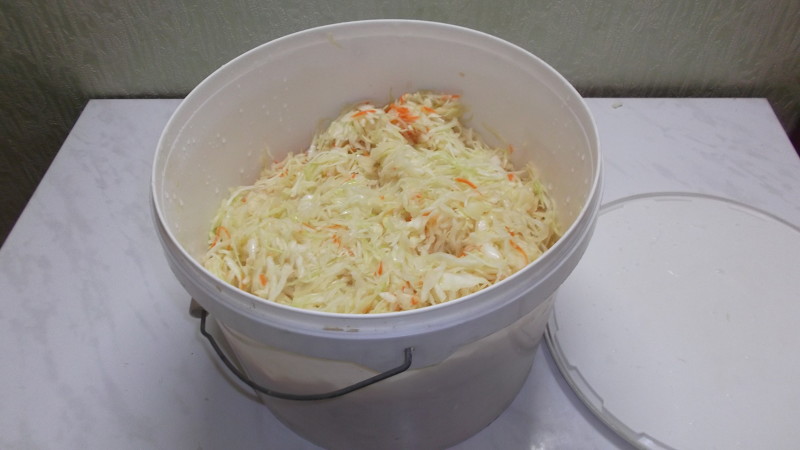
Brine quantity
The correct preparation significantly affects the shelf life. It is important to ensure that the brine covers the cabbage layer.... If a shredded vegetable is exposed in a container, then salt is dissolved in chilled boiled water and top up with the workpiece. And in order to prevent this, they put oppression on sauerkraut.
Attention! If the top layer has darkened, then the pickle has become unfit for human consumption.
Use of preservatives
Prolong product shelf life with preservatives... Suitable for this:
- Granulated sugar... Sprinkle it on top of the cabbage from time to time.
- Acetic acid... It is added quite a bit so as not to spoil the natural taste of the fermented vegetable.
- Vegetable oil... Oil is poured over the workpiece so that it forms a thin film. It will not allow oxygen to pass through and will stop the fermentation process.
- Salt... Sometimes cabbage is specially salted so that it is stored longer. But such a product is not suitable for use in salads.
- Cranberry... The benzoic acid contained in the berries inhibits the development of bacteria, gives a special taste and aroma to the preparation.
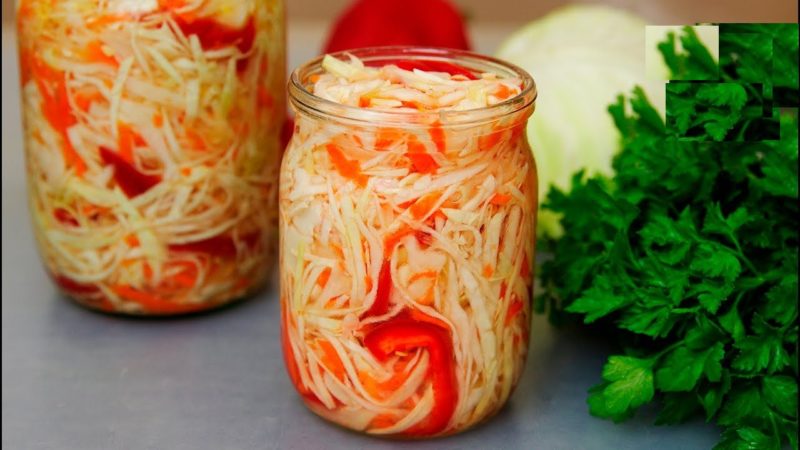
How to understand that cabbage has gone bad
A spoiled product can be seen in several ways:
- Smell... If an unpleasant smell of a rotten product is felt.
- Top container an intense fermentation process has begun in the form of bubbles, foam or even mold. All this indicates a violation of the fermentation process.
- Brine turbidity... When salting cabbage, liquid is released. Ideally, the brine is clear throughout storage. If it starts to grow cloudy, then the product has started to deteriorate.
A suspicious salting can be tried with a small amount. Although cabbage is called "sour," the taste of a spoiled vegetable is easy to identify.
Read also:
Tips & Tricks
With a lack of experience in fermentation, adhere to a few basic tips for better storage of the workpiece:
- for fermentation, only medium-late or late varieties are taken;
- heads of cabbage are chosen large, without putrefactive spots;
- do not use dark green leaves for pickles;
- to avoid the appearance of mold, cranberries are added to the cabbage after the beginning of the fermentation process.
Other storage options
Often in the fall, the refrigerator does not hold all the supplies. Then cans, buckets and pans are sent to cellars, cellars, etc.
Storage in a cellar or basement
The cellar allows you to store preservation in barrels... Oak barrels preserve the taste of the product, and suitable conditions of temperature and humidity will preserve the workpieces for as long as possible - up to 8 months.
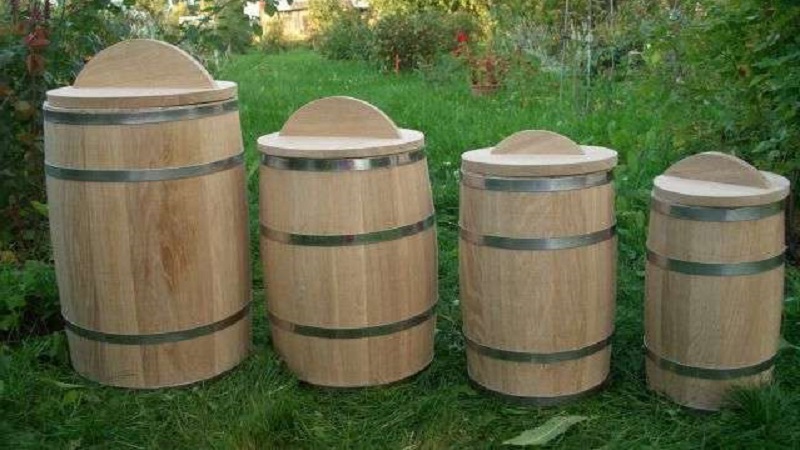
Balcony
Recently, plastic windows are often placed on balconies, they are insulated and maintain a comfortable temperature in winter. On such balconies, cabbage is stored in jars. or in enamelled containers.
If the balcony is cold, then the container with salted vegetable is frozen... When necessary, the upper layer is loosened, the required amount of the product is collected, and warmed at room temperature. The rest is left in a frozen state.
Conclusion
Salads are made from sauerkraut, cabbage soup and borscht are cooked from it, and put as a filling in pies. In any form, it is a source of vitamins that are so essential in winter. But so that the potential benefits do not turn into problems with the gastrointestinal tract, the workpiece must be properly preserved.
Paying special attention to salting containers and temperature conditions, skilled housewives extend the shelf life by several months.